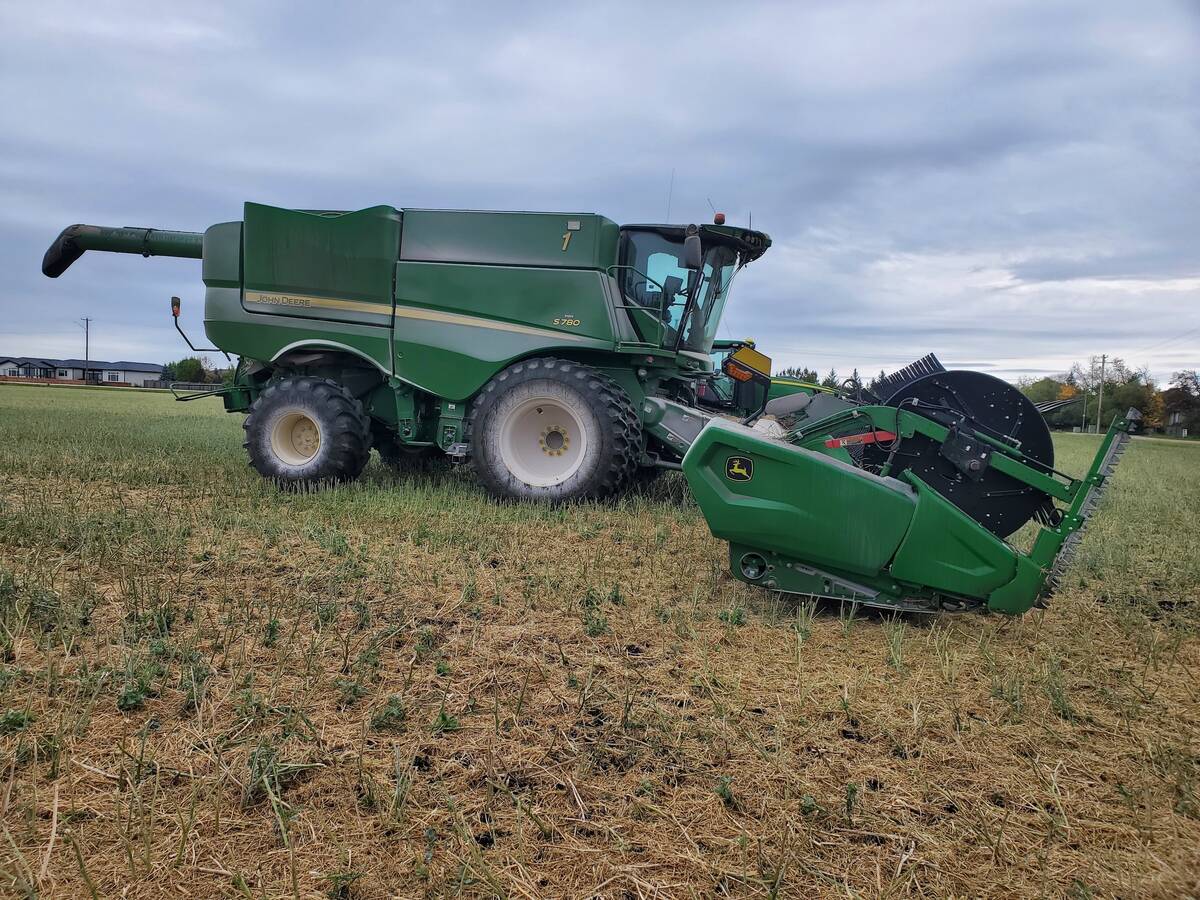SASKATOON – A quarter of the Canadian beef industry could be lost before the sector stabilizes two years from now, predicts Brian Nilsson.
“The really good news for everybody in this room – it’s going to happen next door,” the co-chief executive officer of Nilsson Bros. and XL Foods told the Saskatchewan Beef Industry Symposium.
“Most of the loss in the cattle industry is going to happen in Alberta and Ontario.”
Speaking on a panel projecting what the industry might look like in 10 years, Nilsson said prices will begin to rise as soon as stability occurs.
Read Also

Powdery mildew can be combine fire risk
Dust from powdery mildew can cause fires in combines.
“Look for two years from now a start of a very rapid increase in price,” he said.
“And somewhere about five years from now, we will hit pricing that everybody in this room will be very happy about.”
He suggested prices from 2015 to 2017 could be $1.20 and $1.30 per pound for fat cattle, $1.50 for nine weight feeder steers and $2 for calves.
And then he suggested reporters not print the numbers. Predicting the future is a risky business, he added.
In the near term, he said prices won’t get much better until next fall. Calf prices last fall, although low, were higher than they should have been given fat cattle futures.
“This year is the first year where we have actually seen, in my mind, some of the influences of less cattle,” Nilsson said. “We actually had a little less supply and the market was a little tighter.”
Price recovery should begin over the next 10 months, but fat cattle prices could still drop in the next month or two, he said.
“In the short term, feeder cattle will actually be a little lower this spring than they were last spring, but then they move higher,” he added.
“The spring after will be the start of a very good recovery in cattle prices.”
The economic downturn and market woes are taking their toll on all sectors.
Nilsson said the United States will lose 10 percent of its packing industry while Canada will lose five percent if the specified risk material regulations that put packers at a disadvantage aren’t fixed. Otherwise, it could remain even, he said.
In the feeding industry, the U.S. will lose 20 percent while Canada is expected to drop by 10 to 15 percent.
“They’ve got major issues,” Nilsson said of feeders south of the border. “They realistically had a contraction they don’t talk about.”
That’s because many feedlots that hold 100,000 head are only running half that number.
He said the U.S. feeding industry has lost $7.4 billion since 2005, which is the largest loss ever incurred in North America.
Canadian feeders likely to bow out include smaller farmer-feeders who run 1,000 to 1,500 head.
Nilsson said some will have to decide whether to take a chance on feeding cattle or growing grain and making money.
“Saskatchewan, I’m hoping, will actually be able to expand their feeding industry,” he said. “I think their cow herd will come down but not nearly to the same extent.”

















